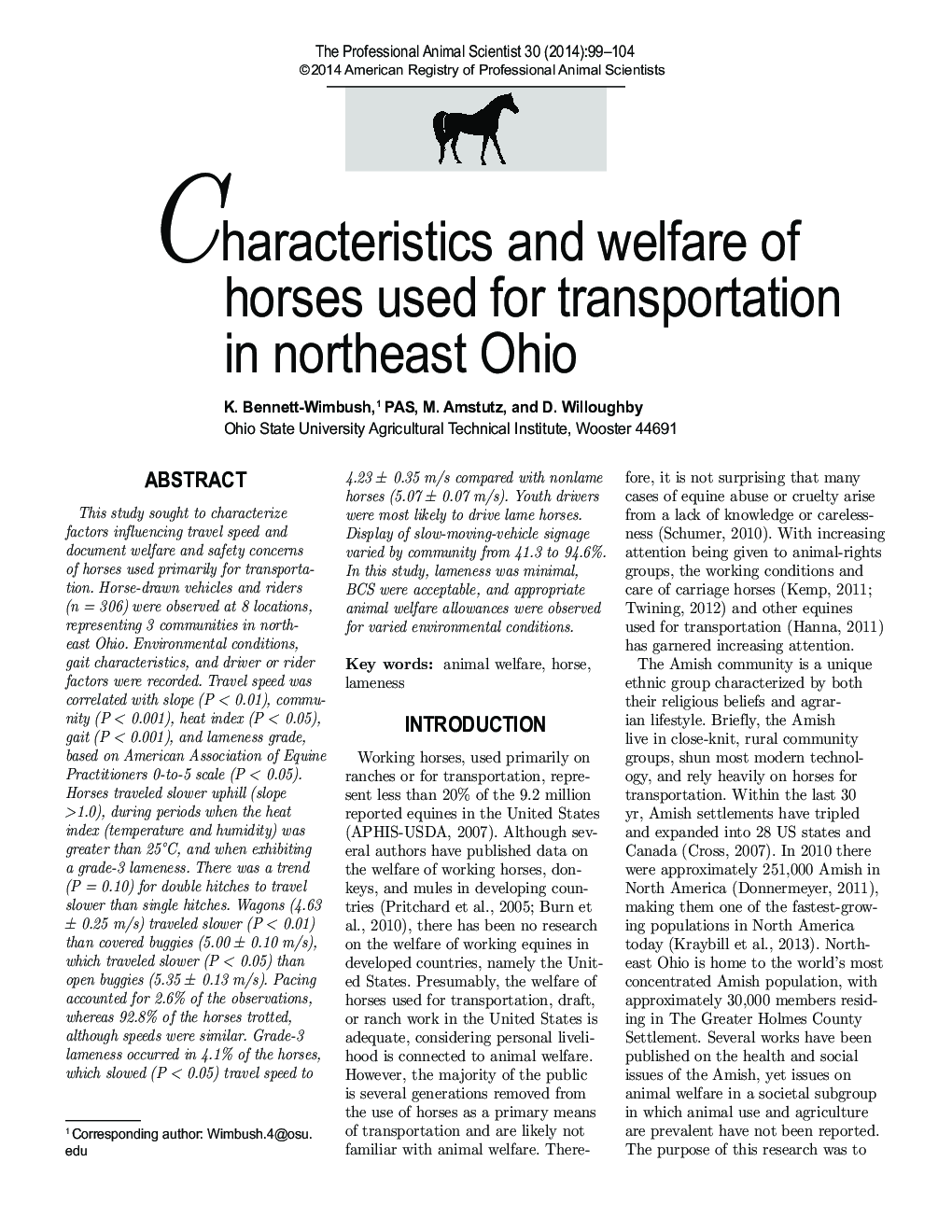| Article ID | Journal | Published Year | Pages | File Type |
|---|---|---|---|---|
| 2453958 | The Professional Animal Scientist | 2014 | 6 Pages |
Abstract
This study sought to characterize factors influencing travel speed and document welfare and safety concerns of horses used primarily for transportation. Horse-drawn vehicles and riders (n = 306) were observed at 8 locations, representing 3 communities in northeast Ohio. Environmental conditions, gait characteristics, and driver or rider factors were recorded. Travel speed was correlated with slope (P < 0.01), community (P < 0.001), heat index (P < 0.05), gait (P < 0.001), and lameness grade, based on American Association of Equine Practitioners 0-to-5 scale (P < 0.05). Horses traveled slower uphill (slope > 1.0), during periods when the heat index (temperature and humidity) was greater than 25°C, and when exhibiting a grade-3 lameness. There was a trend (P = 0.10) for double hitches to travel slower than single hitches. Wagons (4.63 ± 0.25 m/s) traveled slower (P < 0.01) than covered buggies (5.00 ± 0.10 m/s), which traveled slower (P < 0.05) than open buggies (5.35 ± 0.13 m/s). Pacing accounted for 2.6% of the observations, whereas 92.8% of the horses trotted, although speeds were similar. Grade-3 lameness occurred in 4.1% of the horses, which slowed (P < 0.05) travel speed to 4.23 ± 0.35 m/s compared with nonlame horses (5.07 ± 0.07 m/s). Youth drivers were most likely to drive lame horses. Display of slow-moving-vehicle signage varied by community from 41.3 to 94.6%. In this study, lameness was minimal, BCS were acceptable, and appropriate animal welfare allowances were observed for varied environmental conditions.
Keywords
Related Topics
Life Sciences
Agricultural and Biological Sciences
Animal Science and Zoology
Authors
K. PAS, M. Amstutz, D. Willoughby,
